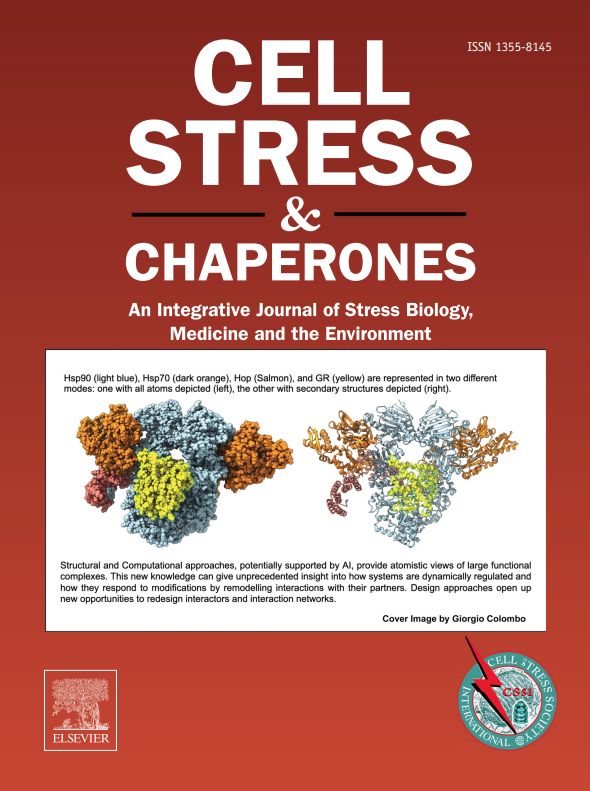Innate extracellular mouse Hsp70 inflammatory properties are mediated by the interaction of Siglec-E and LOX-1 receptors
IF 3.2
3区 生物学
Q3 CELL BIOLOGY
引用次数: 0
Abstract
Innate immune responses to cell damage-associated molecular patterns induce a controlled degree of inflammation, ideally avoiding the promotion of intense unwanted inflammatory adverse events. When released by damaged cells, Hsp70 can stimulate different responses that range from immune activation to immune suppression. The effects of Hsp70 are mediated through innate receptors expressed primarily by myeloid cells, such as dendritic cells (DCs). The regulatory innate receptors that bind to extracellular mouse Hsp70 (mHsp70) are not fully characterized, and neither are their potential interactions with activating innate receptors. Here, we show that extracellular mHsp70 interacts with a receptor complex formed by both inhibitory Siglec-E and activating lectin-like oxidized low-density lipoprotein receptor-1 (LOX-1) on DCs. We also find that this interaction takes place in lipid microdomains within the plasma membrane, and that Siglec-E acts as a negative regulator of LOX-1-mediated innate activation upon mHsp70 or oxidized LDL binding. Thus, Hsp70 can both bind to and modulate the interaction of inhibitory and activating innate receptors on the cell surface. These findings add another dimension of regulatory mechanism to indicate how self-molecules contribute to dampening of exacerbated inflammatory responses.
先天细胞外小鼠Hsp70炎症特性是由siglece和LOX-1受体的相互作用介导的。
先天免疫应答细胞损伤相关的分子模式诱导炎症的控制程度,理想地避免促进强烈的不想要的炎症不良事件。当受损细胞释放Hsp70时,可以刺激从免疫激活到免疫抑制的不同反应。Hsp70的作用是通过主要由髓细胞(如树突状细胞)表达的先天受体介导的。结合细胞外小鼠Hsp70 (mHsp70)的调节先天受体尚未完全表征,它们与激活先天受体的潜在相互作用也尚未完全确定。在这里,我们发现细胞外mHsp70与抑制siglece和激活dc上的LOX-1形成的受体复合物相互作用。我们还发现这种相互作用发生在质膜内的脂质微域,并且siglece作为lox -1介导的mHsp70先天激活或氧化LDL结合的负调节因子。因此,Hsp70可以结合并调节细胞表面抑制和激活先天受体的相互作用。这些发现增加了调节机制的另一个维度,表明自我分子如何有助于抑制加剧的炎症反应。
本文章由计算机程序翻译,如有差异,请以英文原文为准。
求助全文
约1分钟内获得全文
求助全文
来源期刊

Cell Stress & Chaperones
生物-细胞生物学
CiteScore
7.60
自引率
2.60%
发文量
59
审稿时长
6-12 weeks
期刊介绍:
Cell Stress and Chaperones is an integrative journal that bridges the gap between laboratory model systems and natural populations. The journal captures the eclectic spirit of the cellular stress response field in a single, concentrated source of current information. Major emphasis is placed on the effects of climate change on individual species in the natural environment and their capacity to adapt. This emphasis expands our focus on stress biology and medicine by linking climate change effects to research on cellular stress responses of animals, micro-organisms and plants.
 求助内容:
求助内容: 应助结果提醒方式:
应助结果提醒方式:


